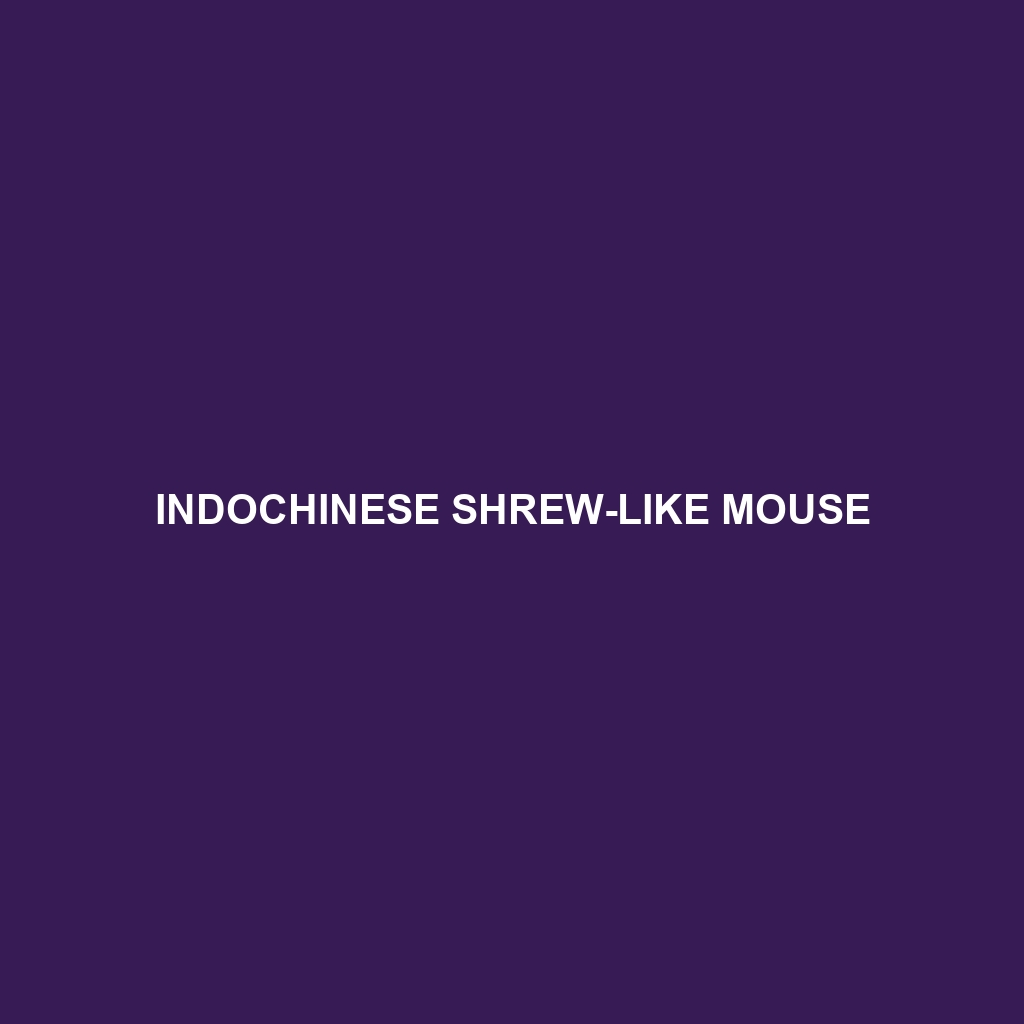Mindanao White-toothed Shrew
Common Name: Mindanao White-toothed Shrew
Scientific Name: Crocidura mindanensis
Habitat
The Mindanao White-toothed Shrew is primarily found in the lush forests of Mindanao, Philippines. This species thrives in montane and lowland forests, preferring areas with rich biodiversity and abundant leaf litter, where it can forage for food. The shrew often inhabits moist environments that provide ample cover and nesting sites, crucial for its survival.
Physical Characteristics
The Mindanao White-toothed Shrew is relatively small, measuring approximately 10 to 15 centimeters in length. It features a slender body, a pointed snout, and a long, hairless tail that can be almost as long as its body. The fur is typically soft and is a mix of brown and gray tones, providing effective camouflage amongst the forest undergrowth. One of its distinctive features is its white-tipped teeth, which contribute to its common name.
Behavior
This species exhibits nocturnal behavior, becoming active during the night to forage for food. The Mindanao White-toothed Shrew is known for its agility and quick movements, often seen darting through the underbrush. It communicates through various vocalizations and scent markings, establishing territory and attracting mates. This shrew is also known to be solitary, preferring to live alone rather than in groups.
Diet
The diet of the Mindanao White-toothed Shrew primarily consists of invertebrates, such as insects, worms, and small crustaceans. It is known to hunt actively within the leaf litter, using its acute sense of smell to locate prey. This shrew has a high metabolism and requires frequent feeding, consuming food that is roughly equal to its body weight daily.
Reproduction
Mindanao White-toothed Shrews breed once or twice a year, with litters typically consisting of 2 to 5 offspring. The breeding season usually occurs during the warmer months, aligning with the availability of food resources. Females give birth to well-developed young that are born in a nest made from leaves and other plant materials. Mothers are known to fiercely protect their young until they are weaned and capable of independent foraging.
Conservation Status
The Mindanao White-toothed Shrew is currently classified as **vulnerable** due to habitat loss and degradation. Deforestation for agricultural expansion and urban development poses a significant threat to its natural habitat. Conservation efforts are essential to protect this species and its habitat from further decline.
Interesting Facts
– The Mindanao White-toothed Shrew is one of the lesser-known shrew species, making it a fascinating subject for researchers and wildlife enthusiasts alike.
– Its ability to consume large quantities of food relative to its size allows it to play an active role in controlling insect populations within its ecosystem.
Role in Ecosystem
The Mindanao White-toothed Shrew plays a crucial role in the ecosystem by acting as both a predator and prey. As a consumer of insects, it helps to regulate populations of detrimental pests. Additionally, it serves as a food source for larger predators, thereby contributing to the food web dynamics within the forest ecosystem. The presence of this shrew indicates a healthy, functioning environment that supports biodiversity.
